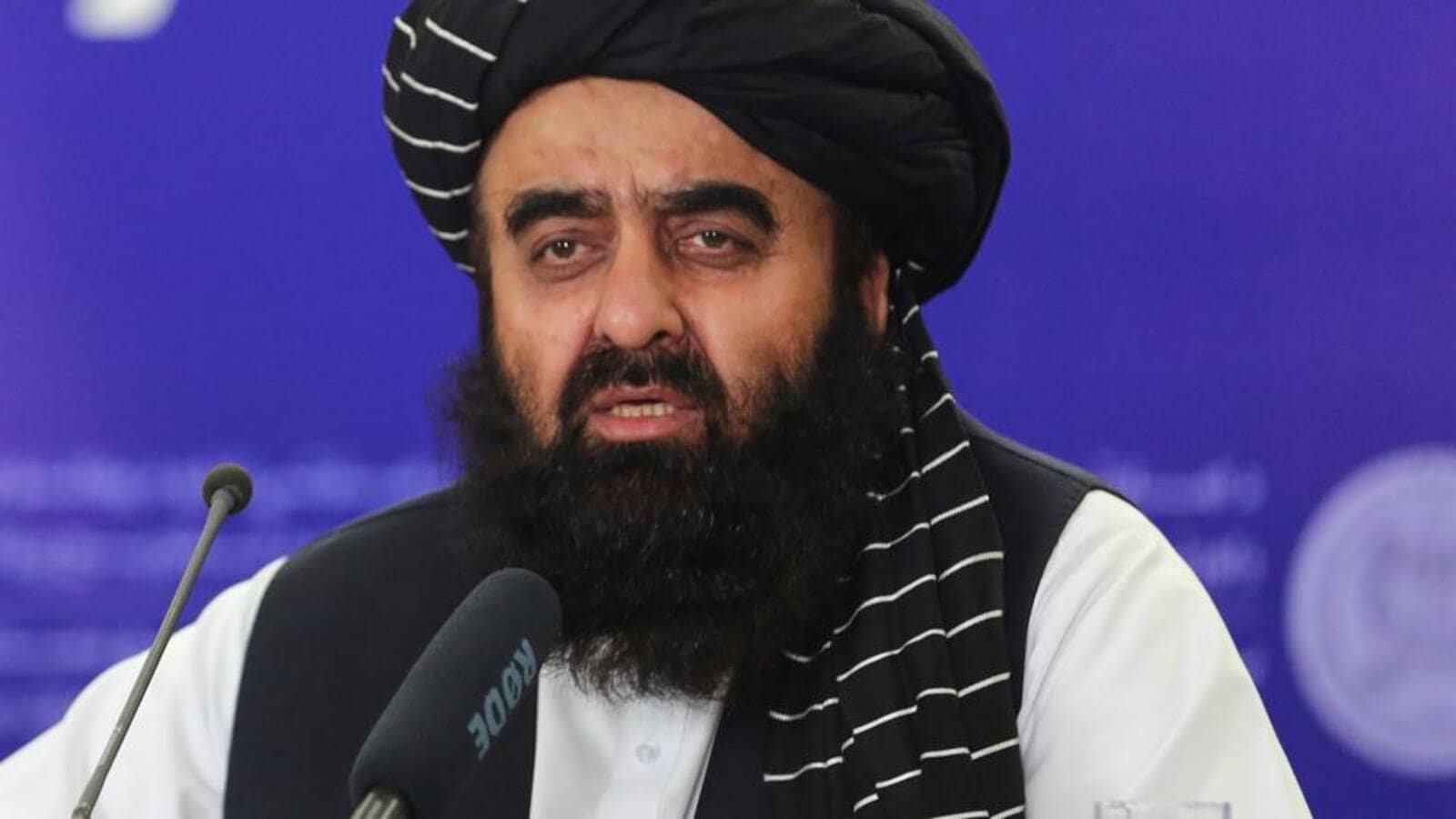Travel Guides & Articles
From Hills to Heritage: Shillong Emerges as India’s Top Trending Destination

Published on
August 22, 2025
Sharing skies with the rain and dotted with pine-clad hills, Shillong has almost playfully claimed the crown of India’s coolest travel story of 2025. Fresh numbers from Skyscanner, the travel engine folks, show that the city clocked an 828% jump in flight searches from January through June 2024, compared to the same stretch last year. Those figures quietly nudged the capital of Meghalaya ahead of Instagram-famed places like Thailand beaches and Kyoto cherry blossoms. The message is clear: the nation is quietly falling for the offbeat, for spaces where waterfalls, living root bridges, and a whiff of cool cloud-kisses outnumber selfie snaps of tourist traps.
The bump in Shillong’s travel buzz is part of a wider Indian shift: wanderers are trading heaving airports and ticking off must-sees for valleys that still hold hush and hills that still hold song. The city, nicknamed the “Scotland of the East” for its rolling charms and cool attitude, asks for a different kind of packing—an open heart, a rain jacket, and maybe a notebook for the stories that unfold over tea in roadside shacks. Here, the scenery is a warm, evergreen “hello,” the culture a generous, uncurated “come sit a while,” and that mix has turned Shillong into the girl-in-the-corner-at-the-party everyone is suddenly curious about.
Shillong’s rolling hills, gushing waterfalls, and mirror-flat lakes have recently begun captivating Indian travelers, many of whom are posting photos of its drifting mists and joyful street scenes. The city charms by marrying its startling landscapes to an equally vibrant cultural life. A single trip can reward visitors with sweeping views, intimate moments at annual music festivals, pop-up art shows, and guided walks through ancient Khasi villages.
A key reason Shillong continues to garner attention is how well it has held on to its original bounty. Unlike destinations dulled by too many souvenir stalls, Shillong lets people roam in gardens of green without the louder crowds that many Indian hill stations attract. This tranquil intimacy, together with the city’s cooler, pine-scented air, invites those in search of quieter, more eco-conscious escapes to linger a little longer.
Shillong’s Rhythm and Cafe Scene: An Evolving Magnet for Travelers
Over the past few years, Shillong’s music scene has steadily captured national attention. Frequently billed the ‘Rock Capital of India’, the city boasts a slate of homegrown fests and a surge of indie musicians. Visitors can now stroll between hillside cafés and dimly-lit bars, where live sets merge with the scent of wet earth and the glow of hanging lights. These venues serve fresh coffee, local dumplings, and a steady stream of bass lines, crafting a seamless blend of sound, art, and the sweeping landscape.
Travelers in search of a trip that balances nature, culture, and genuine human connection have begun to linger in Shillong. Young backpackers, poets, and emerging artists trade stories in the cafés, drawn by the city’s quiet beauty as much as by its loud, heartfelt songs. In the limestone valleys, the hills feel, for a moment, both a world apart and a homecoming.
In addition to its rich cultural fabric, Shillong is fast becoming a favored destination thanks to the government’s emphasis on eco-tourism and responsible travel. The region’s stunning landscapes are a natural invitation, and the Meghalaya administration has therefore set out to cultivate eco-conscious tourism. The Meghalaya State Tourism Development Corporation (MSTDC) has been at the forefront, working to guide tourism so that it nurtures the environment while honouring local heritage.
A defining feature of the sustainable push is the meaningful role of local communities. Shillong has embraced community-based tourism, allowing visitors not only to witness the Khasi way of life but to participate in it—whether through a village potter’s workshop, a guide telling folklore on a village trail, or a market selling tribal handicrafts. The pattern is clear: tourism revenue is funnelled back into the very folk cultures that create it.
To reinforce the eco-tourism vision, the Meghalaya government has rolled out a range of green initiatives. The establishment of eco-resorts treads lightly on the landscape, hand-carved nature trails wind through pristine forests, and responsible village tours reveal heritage while safeguarding it. The result is a travel experience that suits the global appetite for low-impact exploration and that still carries Shillong’s unique charm.
Meghalaya Tourism
The diverse rides that swing open to travelers to Shillong make it a pocket that suits every style under the sun. Elephant Falls tumbles like silver ribbons between mossy boulders; the mirror-smooth surface of Umiam Lake spreads like a teal hush; Ward’s Lake, framed with flower-filled paths, draws families for swan-shaped pedal boats. Nature lovers can layer their day with a drive to Shillong Peak, where the radiant spread of hills, the dawn light seeping between them, is like a long, gentle country sigh; the dawn waterfalls drench the valleys below, painting them with mist.
For those whose idea of a good time is measured in backpacks and stars over dinner, the region serves trekking trails that climb through thick green canopies where sun shafts spotlight wild orchids, and nights under canvas by the fire tell you the distance between you and the city. Trails can lead you to the bordering embrace of Kaziranga’s rhinos or to the silence of the Nanda Devi Sanctuary, where the only trails are animal paths and the only echoes are your own soft steps.
Reaching Shillong is a breeze: the city holds a hand out to travelers arriving on a regular flutter of flights from Guwahati and Kolkata, and the winding roads that follow are towns, tea stalls, and postcard hills. The Meghalaya State Transport Corporation’s buses are a choir of sturdy seats and open windows, marking time with the songs of night insects and the occasional cheer of distant waterfalls, the fare light on the purse and heavy on the memories.
Conclusion: Shillong’s Future as a Tourism Hub
By 2025 Shillong has clearly risen to become a must-visit travel destination, blending compelling scenery, vibrant local culture, and a steady commitment to sustainable tourism. This growing popularity among domestic and international travelers speaks to the city’s appeal across a broad audience. Strategically positioned as a gateway to Northeast India, Shillong can now advance into a premier hub. Underpinning this positive trajectory are government policies centred on eco-tourism and involving local communities at every level. This dual focus guarantees that the city’s tourism expansion will create lasting advantages for visitors while simultaneously uplifting residents and preserving the region’s fragile environment.
Travel Guides & Articles
Taliban minister planned India visit; Pak-led UN panel rejects travel ban waiver

NEW DELHI: Taliban foreign minister Amir Khan Muttaqi called off a planned visit to India this month after failing to secure a waiver to a travel ban imposed under UN Security Council sanctions, people familiar with the matter said.
If the visit had gone ahead, Muttaqi would have been the first minister from the Taliban setup in Kabul to travel to India since the group seized power in Afghanistan after the collapse of the Ashraf Ghani government in August 2021. All Taliban leaders sanctioned by the UN Security Council have to secure a waiver for foreign travel.
Pakistan currently heads the 1988 sanctions committee of the UN Security Council that oversees the implementation of the travel ban, an assets freeze, and an arms embargo related to sanctioned Taliban leaders, and the people cited above said on condition of anonymity that Islamabad is believed to have been behind the move to deny Muttaqi a waiver.
Also Read: Trump says India, Russia ‘lost’ to ‘darkest China’. New Delhi says no comments
The 1988 sanctions committee includes all 15 members of the Security Council, and a waiver can be blocked if even one member objects to it. Muttaqi’s planned visit to Pakistan last month was called off after the US reportedly objected to a waiver.
When external affairs ministry spokesperson Randhir Jaiswal was asked at a weekly media briefing about reports of Muttaqi’s planned visit to India, he replied: “As you are aware, we have longstanding ties with the people of Afghanistan. India continues to support the aspirations and developmental needs of the Afghan people.
“We continue to have engagements with Afghan authorities. If there is an update on this account, we will share it with you.”
The people said a waiver for Muttaqi was sought from the 1988 sanctions committee but it wasn’t granted. The planned visit to India was being seen as a follow-up to a phone call between Muttaqi and external affairs minister S Jaishankar in May – the first such interaction between the two sides.
Also Read: India will ‘undoubtedly’ keep buying Russian oil, says Nirmala Sitharaman
The phone conversation also built on a meeting between Muttaqi and foreign secretary Vikram Misri in Dubai in January and came against the backdrop of tensions between India and Pakistan. The Taliban had also condemned the Pahalgam terror attack in April.
India has quietly built up its contacts with the Taliban leadership in recent years, mainly to protect regional interests at a time when China has sought to expand its footprint in Afghanistan, and Muttaqi and Jaishankar had spoken on the phone again on September 1 after New Delhi dispatched relief materials to help the victims of a devastating earthquake that struck the Afghan province of Kunar.
The people said that Muttaqi’s visit had only been called off, and it is expected to go ahead in the coming months once the issue of the waiver on the travel ban is addressed.
Travel Guides & Articles
North East Aviation summit boosts regional growth

The Ministry of Civil Aviation organised the North East Region Ministers’ Conference on Civil Aviation 2025 and the 3rd North East Aviation Summit in Itanagar, Arunachal Pradesh. The event brought together key leaders including Shri Pema Khandu, Chief Minister of Arunachal Pradesh, as Chief Guest, and Shri Rammohan Naidu, Union Minister for Civil Aviation, as Guest of Honour. Senior ministers from Mizoram, Sikkim, and Assam also participated, reflecting the collective importance given to aviation-led development in the region.
In his inaugural address, Shri Pema Khandu highlighted the critical role of transportation connectivity in driving growth in the North East. He noted that in the last decade, the region has witnessed unprecedented progress in aviation infrastructure. With schemes like UDAN, long-cherished dreams of Arunachal Pradesh residents to have their own airports have been fulfilled, transforming the socio-economic landscape of the state and the broader region.
Union Minister Shri Rammohan Naidu stressed the importance of strengthening Centre-State-Industry partnerships to accelerate aviation growth. He emphasised that enhanced connectivity is vital for border access, tourism promotion, cargo movement, and industrial development. The Minister urged states to expand tourism infrastructure and skilling programs to complement aviation growth, noting that employment opportunities for youth must be prioritised alongside infrastructure expansion.
The Minister shared that operational airports in the region have increased from nine in 2014 to sixteen at present. Aircraft movements have nearly doubled, while domestic passenger traffic has tripled. To support further expansion, the Centre will offer four pre-feasibility studies annually for new Greenfield airports at no cost, enabling states to plan their aviation projects without financial constraints.
During discussions, state leaders highlighted how aviation connectivity will strengthen tourism, trade, healthcare, emergency services, and entrepreneurship. They underscored the role of new airports, heliports, and cargo facilities in reducing travel time, boosting exports of local products, and attracting investments. Industry players, including airlines, OEMs, MROs, cargo operators, and drone companies, engaged in dialogues to identify investment opportunities and address implementation challenges.
Looking ahead, the Ministry announced its flagship event Wings India 2026, scheduled from 28–31 January 2026. Organized with AAI and FICCI, the event will serve as a global platform to showcase India’s aviation growth story, promote policy dialogue, and foster international partnerships. With these initiatives, civil aviation is set to become a transformative enabler of Viksit Bharat @2047, giving new wings to North East India’s aspirations.
Travel Guides & Articles
DGCA unveils draft fatigue risk management framework

The Directorate General of Civil Aviation (DGCA) has introduced a draft framework on Fatigue Risk Management System (FRMS) for Indian airlines, aimed at addressing pilot and cabin crew fatigue with a scientific, data-driven approach. Released on September 4, 2025, the draft highlights a performance-based model that goes beyond traditional duty-hour and rest regulations.
Unlike prescriptive rules that only set maximum flight duty periods, FRMS focuses on understanding how fatigue develops in real-world conditions. It incorporates bio-mathematical fatigue models, sleep and activity tracking, self-reporting by crew, and analysis of safety-event data. The DGCA clarified that FRMS will remain optional, allowing airlines to either continue with existing Flight Duty Time Limitations (FDTL) or adopt FRMS if they can prove its effectiveness through data and safety audits.
For airlines choosing to implement FRMS, a comprehensive policy approved by senior management will be mandatory. This policy must cover scheduling practices, fatigue reporting systems, corrective measures, and training. Carriers will be required to demonstrate to the DGCA that their systems meet defined safety performance targets through audits, oversight reviews, and regular data submissions. If successful, operators may receive flexibility in rostering beyond current FDTL limits, provided safety is not compromised.
The framework also shifts responsibility to both crew and operators. Pilots and cabin crew are expected to monitor their rest, maintain sleep logs, and report fatigue, while airlines must create a supportive environment where fatigue reporting is encouraged without penalties. The regulator emphasised that effective FRMS requires trust and collaboration between management and staff.
The move comes amid rising global concern over fatigue as a major flight safety risk. India has witnessed growing debate on this issue, with reports of extended duty hours and insufficient rest periods despite revised FDTL regulations. Aviation experts point out that a pilot can still suffer fatigue even within legal duty limits due to irregular hours, commuting time, and disrupted sleep cycles.
The draft aligns with International Civil Aviation Organisation (ICAO) guidelines but has been tailored for Indian conditions. DGCA has invited feedback from airlines, pilot associations, and the public until September 15, after which the framework will be finalized. Once adopted, FRMS could provide Indian aviation with a modern, flexible, and science-based system to safeguard both crew wellbeing and passenger safety.
-

 Business1 week ago
Business1 week agoThe Guardian view on Trump and the Fed: independence is no substitute for accountability | Editorial
-
Tools & Platforms4 weeks ago
Building Trust in Military AI Starts with Opening the Black Box – War on the Rocks
-

 Ethics & Policy1 month ago
Ethics & Policy1 month agoSDAIA Supports Saudi Arabia’s Leadership in Shaping Global AI Ethics, Policy, and Research – وكالة الأنباء السعودية
-

 Events & Conferences4 months ago
Events & Conferences4 months agoJourney to 1000 models: Scaling Instagram’s recommendation system
-

 Jobs & Careers2 months ago
Jobs & Careers2 months agoMumbai-based Perplexity Alternative Has 60k+ Users Without Funding
-

 Education2 months ago
Education2 months agoVEX Robotics launches AI-powered classroom robotics system
-

 Funding & Business2 months ago
Funding & Business2 months agoKayak and Expedia race to build AI travel agents that turn social posts into itineraries
-

 Podcasts & Talks2 months ago
Podcasts & Talks2 months agoHappy 4th of July! 🎆 Made with Veo 3 in Gemini
-

 Podcasts & Talks2 months ago
Podcasts & Talks2 months agoOpenAI 🤝 @teamganassi
-

 Education2 months ago
Education2 months agoMacron says UK and France have duty to tackle illegal migration ‘with humanity, solidarity and firmness’ – UK politics live | Politics





















